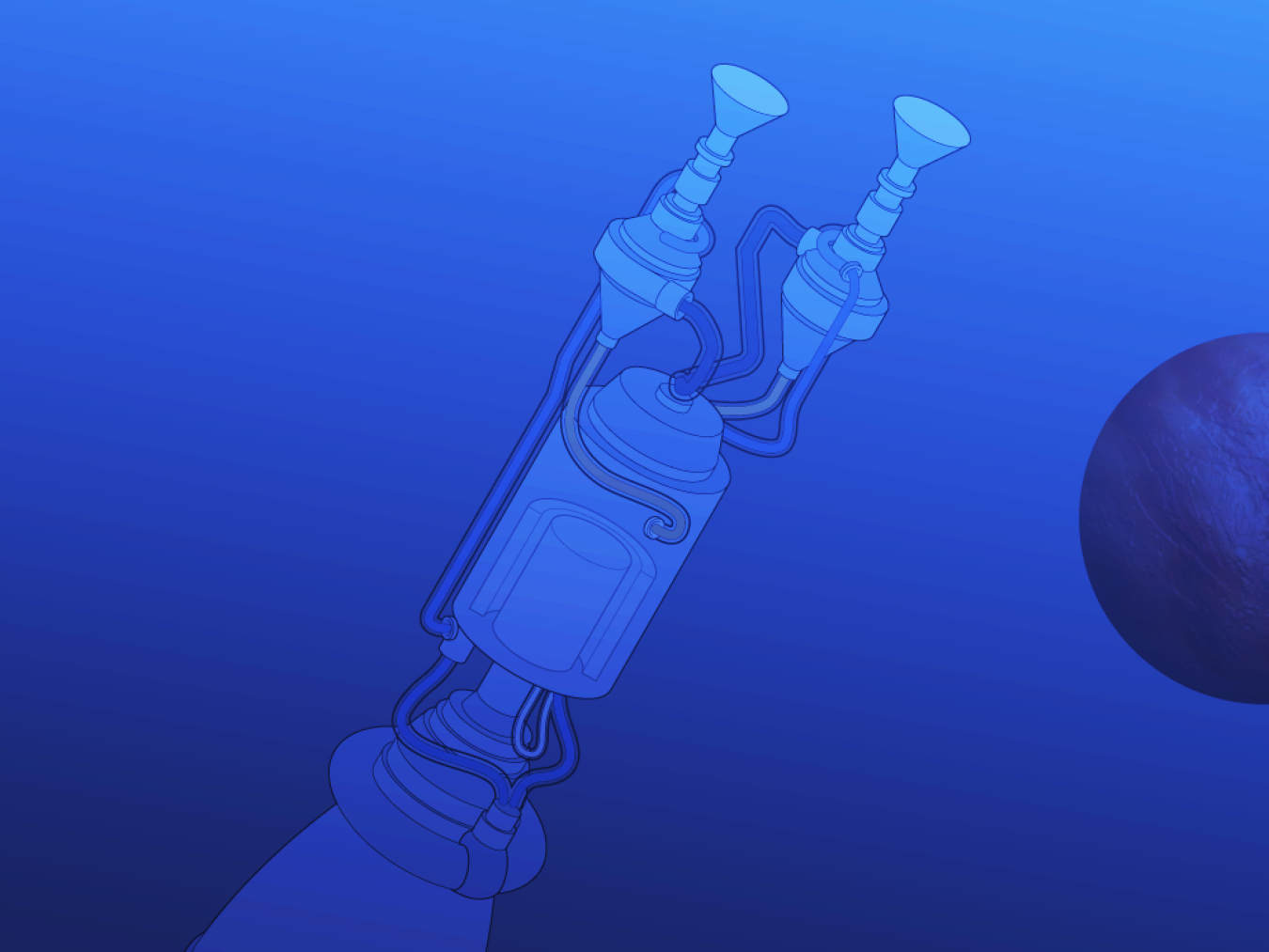Six things everyone should know about nuclear-powered rocket engines.
July 23, 2025NASA could one day use nuclear-powered rocket engines to send astronauts to Mars.
Nuclear thermal propulsion (NTP) systems aren’t new, but they could significantly reduce travel times and carry greater payloads than today’s top chemical rockets — expanding humanity’s opportunity to explore deep space.
Here are 6 things you should know about nuclear thermal propulsion.
Watch the animation above to learn about the benefits of nuclear thermal propulsion.
1. NTP Systems Are Powered By Fission
NTP systems work by pumping a liquid propellant, most likely hydrogen, through a reactor core. Uranium atoms split apart inside the core and release heat through fission. This physical process heats up the propellant and converts it to a gas, which is expanded through a nozzle to produce thrust.
2. NTP Systems Are More Efficient Than Chemical Rockets
NTP rockets are more energy dense than chemical rockets — and more efficient.
Engineers measure this performance as specific impulse, which is the amount of thrust you can get from a specific amount of propellant. The specific impulse of a chemical rocket that combusts liquid hydrogen and liquid oxygen is 450 seconds, exactly half the propellant efficiency of the initial target for nuclear-powered rockets (900 seconds).
This is because lighter gases are easier to accelerate. When chemical rockets are burned, they produce water vapor, a much heavier byproduct than the hydrogen that is used in a NTP system. This leads to greater efficiency and allows the rocket to travel farther on less fuel.
3. NTP Systems Won’t Be Used At Launch
NTP systems would be launched into space by traditional chemical rockets and enter a planned orbit before they are safely turned on. NTP systems are not designed to produce the amount of thrust needed to leave the Earth's surface.
4. NTP Systems Will Provide Greater Flexibility
NTP systems offer greater flexibility for deep space missions. They can reduce travel times to Mars by up to 25% and, more importantly, limit a flight crew’s exposure to cosmic radiation. They can also enable broader launch windows that are not dependent on orbital alignments and allow astronauts to abort missions and return to Earth if necessary.
5. NTP Systems Were Developed With Support From DOE
NTP is not new. It was studied by NASA and the Atomic Energy Commission (now the U.S. Department of Energy) during the 1960s as part of the Nuclear Engine for Rocket Vehicle Application (NERVA) program. During this time, Los Alamos National Laboratory scientists helped successfully build and test a number of nuclear rocket engines that today form the basis of current NTP designs.
Although the NERVA program ended in 1972, research continued to improve the basic design, materials, and fuels used for NTP systems.
NASA and DOE are now working with industry to develop updated nuclear thermal propulsion reactor designs. A design competition that led to development of multiple updated NTP reactor designs was held in 2021. Fabrication and initial testing of all major components included in three of the designs has been completed and work continues on integration and manufacturing of full engine systems.
6. NTP Systems Are Focused On Using Low-Enriched Uranium
DOE is working with NASA to help test, develop and assess the feasibility of using new fuels that require less uranium enrichment for NTP systems. This fuel may be made using new advanced manufacturing techniques and can potentially help reduce security-related costs that come with using highly enriched fuel.
Idaho National Laboratory has helped NASA develop and test fuel composites at its Transient Reactor Test (TREAT) facility. The testing examined how high assay low-enriched uranium (HALEU) fuels perform under the harsh temperature and radiation environments found in NTP reactors. The testing demonstrated that nuclear fuels under development by NASA and DOE are capable of withstanding ramps up to operational nuclear thermal propulsion temperatures without experiencing significant damage.
Learn more about NASA’s nuclear thermal propulsion work and explore DOE’s role in space exploration.


